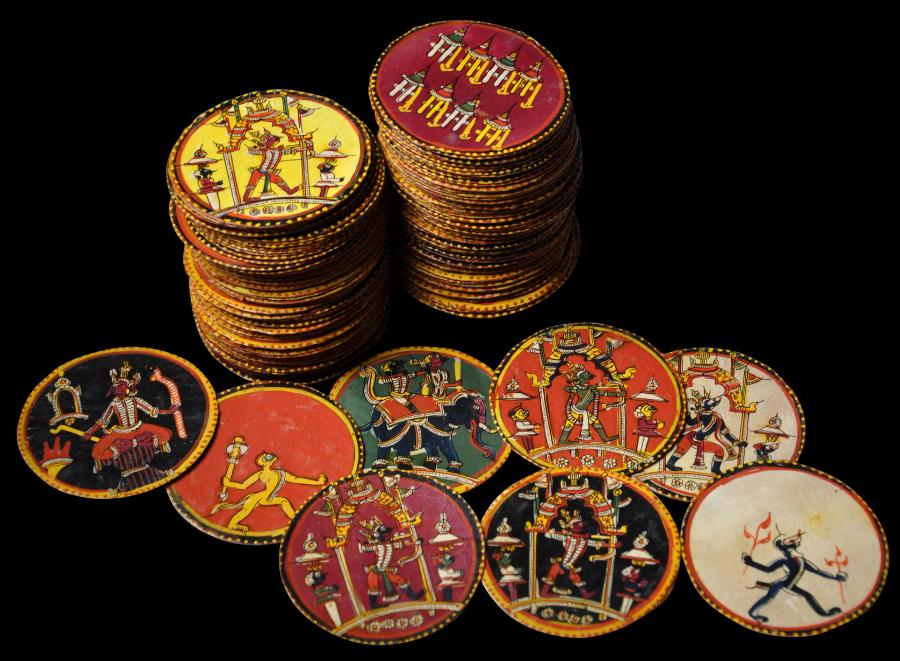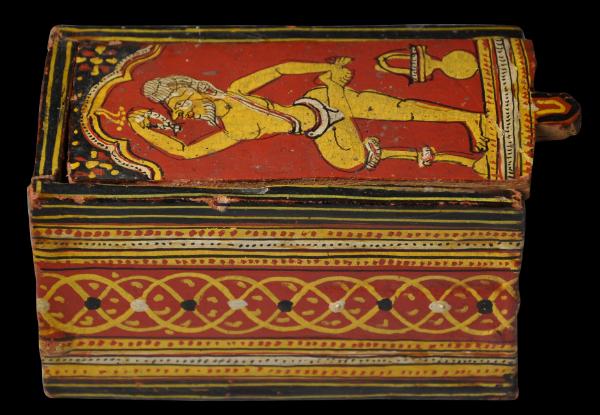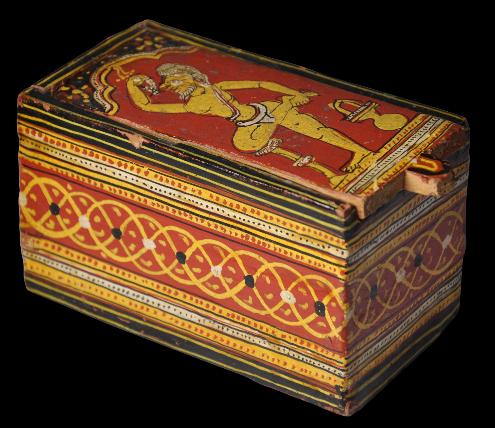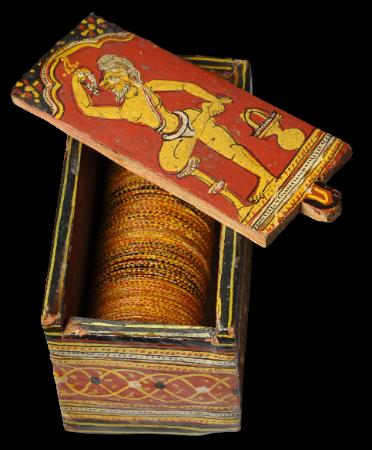
Indian Ganjifa Playing Cards
Ramayana Ganjpa Playing Card Set & Box
Sonepur, Orissa, India
19th century
length of box: 12.3cm, height of box: 6.8cm, width of box: 6.5cm, diameter of cards: 4.3cm
The Ramayana ganjpa (Oriya language for ganjifa) comes from Sonepur, formerly a small princely state in north-western Orissa. This set has 102, out of a probable number of 120 (very few old, complete sets are known; most surviving sets are many cards short.)
Each card is of circular form and is painted on lacquered textile. The cards are stored in light wood box that has been painted on all sides with colourful bands of geometric motifs. The lid, which slides in and out, is decorated with a naked
sadhu who stands on one leg and has a holy water pot beside him.
The cards are painted with typically Orissan features – the characters are portrayed with elongated forms and long noses. Cards show
rajas, Rama, Lahshmana, Indraji and other Ramayana characters, as well as the usual numeral cards.Ganjifa originated in Persia but it really flourished in India where the game developed in various forms. Meanwhile, in Persia, the game largely died out. Initially in India, the game was played by the Mughals of northern India, but it soon spread to most parts of the country.
Cards similar to these are illustrated in von Leyden (1982, p. 108).
The cards are in fine condition. The box has some minor chipping and the lid no longer fits tightly, but otherwise, it is a fine set and a good example of the types of
ganjifa/ganjpa produced in Sonepur.
References
Chopra, S., Ganjifa: The Playing Cards of India in Bharat Kala Bhavan, Banaras Hindu University, 1999.
von Lyeden, R.,
Ganjifa: The Playing Cards of India, Victoria & Albert Museum, 1982.
Topsfield, A., (ed.),
The Art of Play: Board and Card Games of India, Marg Publications, 2006.
Provenance
private collection, UK
Inventory no.: 2351
SOLD
Ask about this item






